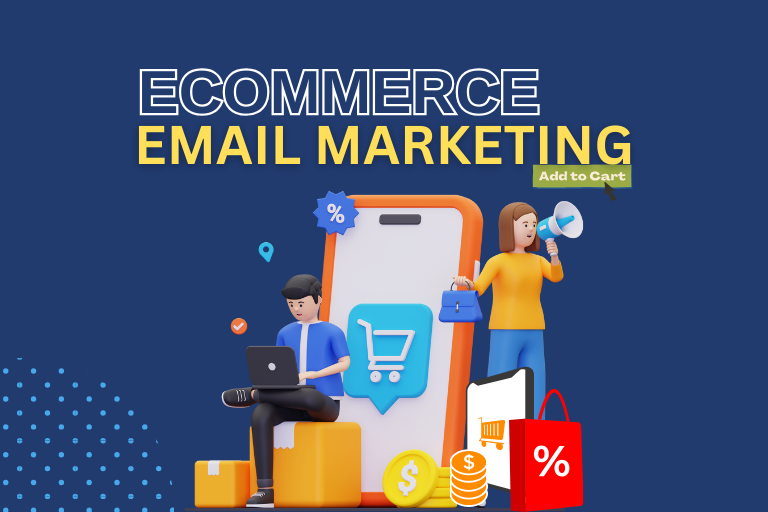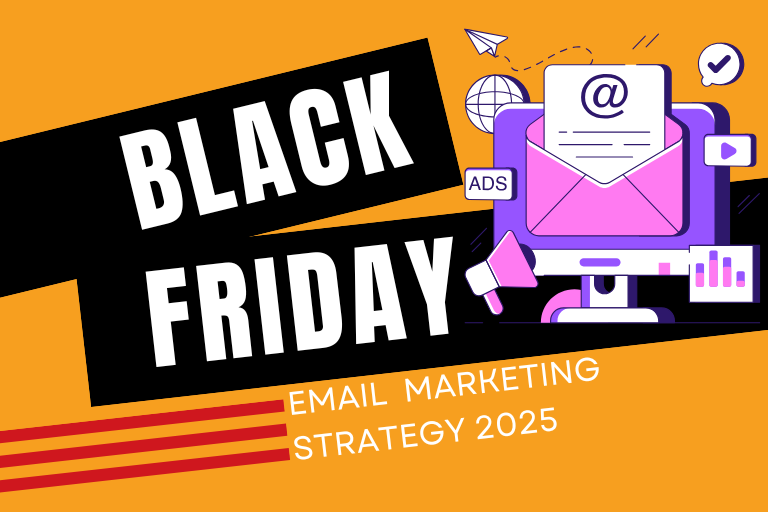Let’s assume you already run an ecommerce business or you plan on starting one. If that is true, you will agree ecommerce businesses deal mostly with customers you don’t even get to meet.
This means you have to craft ways to reach out, retain, and communicate with customers. Actually, one of the best ways to go about this is by email.
There are a thousand and one other means, but email marketing remains one of the most powerful in a business owner’s bag of strategies.
So, how does it work, and what recommended strategies should be employed to get the best results?
If these are the questions you have in mind, we will do more than answer them. Let’s start with understanding why e-commerce email marketing is vital to businesses.
Why Email Marketing is a Game-Changer for E-Commerce
While we have tempting social media ads and influencer campaigns, it is easy to think email might have outlived its usefulness.
However, don’t let its simplicity fool you as it remains a tested and trusted strategy for ecommerce businesses worldwide. Here are some of its perks.
1. You Own the Channel
Unlike social media platforms where changes in algorithms can restrict your reach overnight for no good reason, your email list is yours.
You control when and how you communicate with your audience. No matter how good your social media ad campaign is, you are forced to rely on the competence of the social media platform’s algorithm at the end of the day.
With email however, you can easily track mails sent, delivered, and even open rates using the vast auxiliary tools email marketing software comes with.
2. High Returns on Investment
Studies consistently show that for every $1 spent on email marketing, businesses can expect an average return of $42.
Whether you’re running a small online boutique or managing a multi-million-dollar business, mastering email marketing can transform your customer relationships, boost sales, and build a loyal audience.
Compare that to paid ads or SEO, where costs can spiral quickly. This usually translates to unplanned expenses for new and even veteran business owners.
It cuts into the profits of the business, or demands starving other important parts of funding to redirect them to ads.
3. Personalization
Emails let you speak directly to your customers, tailoring messages based on their behavior, preferences, and purchase history.
With the constant improvements in features of email marketing software, you can personalise emails using customers names, nicknames, titles, and whatever you know will appeal to their sense of importance.
4. Repeat Business
Converting new customers is usually expensive and tasking up to five times more than retaining existing ones.
With ecommerce email marketing, your brand is kept in the mind of your customers which subconsciously encourages repeat purchases.
5. Measurable Results
With email marketing, open rates, click-through rates, and conversions are all trackable and these give you clear insights into what works and what doesn’t.
Social media ad campaigns may be trackable too, but they are honestly restricted and not always pinpoint accurate like email campaigns.
6. Customer Preference
Other mediums of outreach blast the customer with all sorts of adverts and messages, which may become annoying in the long run.
Email marketing however lets customers decide what emails they want. This in turn gives the ecommerce business owner insight on how to tailor emails and to whom.
Ecommerce Email Marketing Strategies that Work
Now we have proven the importance of email marketing, let’s break down the strategies to get it work for you.
1. Build a Quality Email List
Your email marketing success starts with your list. A small, engaged list of subscribers who genuinely want to hear from you is worth far more than a massive list of uninterested contacts.
Start by offering an irresistible lead magnet, as people usually do not give away their email addresses for free. You need to offer something valuable in return.
This could be a discount code, a free guide, or exclusive access. You should also place sign-up forms strategically on your website using pop-ups, footer opt-ins, and checkout pages.
One more thing, when customers make a purchase, give them an option to join your email list so as to grow your list organically.
Always avoid buying email lists and stay legal compliant to build trust and keep your brand out of trouble.
2. Segment Your Audience
Sending the same email to everyone on your list is a mistake you should avoid. Segmentation lets you tailor your messages, making them more relevant and effective.
Use purchase history to group customers by what they’ve bought. Someone who bought running shoes might love emails about fitness gear, while a jewelry buyer might prefer updates on new accessories.
You can also separate active subscribers who open and click from inactive ones, and re-engage the latter with special offers.
Many email platforms like Mailchimp, Klaviyo, or ActiveCampaign make segmentation easy with built-in tools. The more specific your segments, the higher your conversion rates will be.
3. Craft Emails That Convert
Great email marketing isn’t about fancy design and frequency of mails sent. It is about delivering the right message at the right time.
There are various emails every e-commerce business owner should master, like welcome emails, abandoned cart emails, promotional emails, and post-purchase emails.
Employ them where they are required and watch the improvements they bring to your customer retainment and profit margin.
4. Loaded Subject Lines
Your email won’t get opened if the subject line doesn’t grab attention. We recommend you keep them short and witty.
Aim for 6-10 words so it displays fully on mobile devices. You can also employ a sense of urgency to trigger fear of missing out on awesome deals on the part of the customer.
Don’t forget that your emails should be about a particular subject, as other points might get lost or overlooked due to the absence in the subject line.
Hence, it is better to send multiple mails on multiple subjects than pack everything for the customer to unbox.
5. Optimise for Mobile and Similar Devices
Over 50% of emails are opened on mobile, and using a single-column layout with large tappable buttons will make reading more convenient for recipients.
Ensure to include your logo and consistent colors/fonts to reinforce your brand. Remember to feature high-quality product images, but don’t overload the email to avoid slow loading speed as they reduce engagement.
Spread your CTA all over the mail body, including the introduction and even the subject line. Tools like Canva or your email software platform’s templates can simplify this process.
6. Automate for Efficiency
Manual emailing simply doesn’t scale. It can be likened to physically hawking your products, which is an outdated practice that consumes more effort and time with little positive results.
Automation saves time and ensures timely delivery. So, you should set up your ecommerce software to send welcome emails when someone subscribes.
On the other hand, when a cart is left behind, you can send abandoned cart emails. We recommend platforms like Klaviyo or Shopify Email as they excel at ecommerce automation.
7. Measure and Optimize
There is a popular business quote that says “You can’t improve what you don’t measure”. This is more relevant in ecommerce as many experts and ecommerce business owners have come to see.
That’s why you need to track your open rates, click through rates, conversions, and all relevant metrics to ensure you stay on the customer retaining and profit side. Remember to tweak everything till you get what works best for your platform.
Recommended Ecommerce Email Marketing Software for You
With all the strategies we have given, it is important you use trusted ecommerce email marketing software with great built in tools for efficiency. We have some recommendations with brief summaries of their features.
1. Brevo
Brevo features multi-channel campaigns as it blends email with SMS and WhatsApp messaging in one platform. This lets you reach audiences wherever they are without juggling tools.
2. Mailchimp
This platform gives a top tier audience insights dashboard. A slick, visual breakdown of subscriber trends and engagement helps you spot what’s working at a glance.
3. ActiveCampaign
Its best feature in the context of email marketing is lead scoring. This software ranks your contacts based on engagement and behavior, so you can prioritize hot leads effortlessly.
4. MailerLite
For email marketing, MailerLite’s pop-up forms and its other customizable pop-ups sync with email lists, boosting sign-ups without needing a separate tool.
5. Klaviyo
This software needs no introduction in the ecommerce community. It can easily compare your campaign performance against industry averages, giving e-commerce users a competitive edge with Klaviyo Email Marketing.
Also Read – Ecommerce Welcome Email Examples
Conclusion
Email marketing isn’t just a series of strategies. It is a relationship-building powerhouse for e-commerce businesses.
With the tips, recommendations and strategies we have given, your customer’s inbox should be your playground.
Remember to book a FREE discovery call with us to help move your business to even greater heights.



